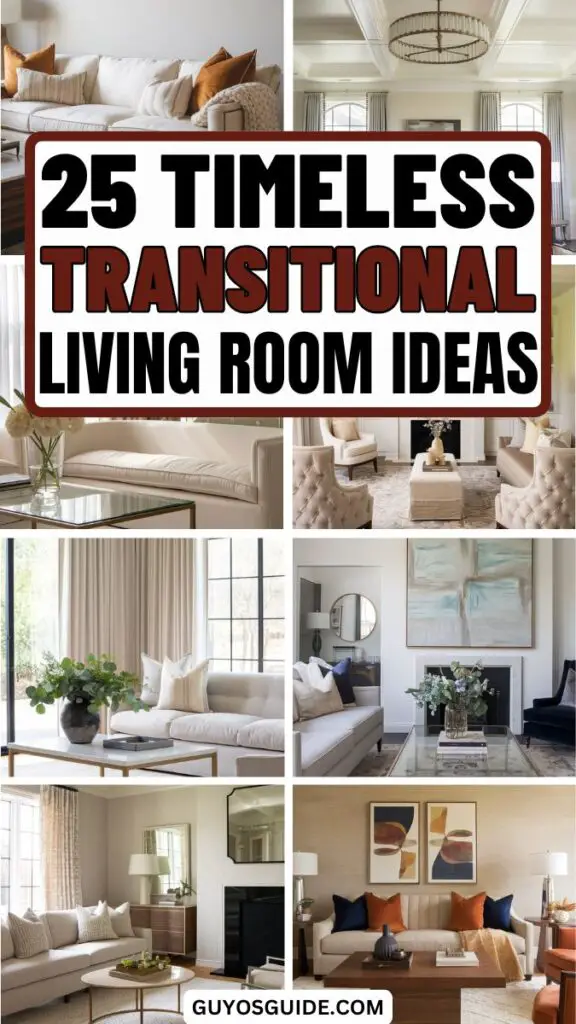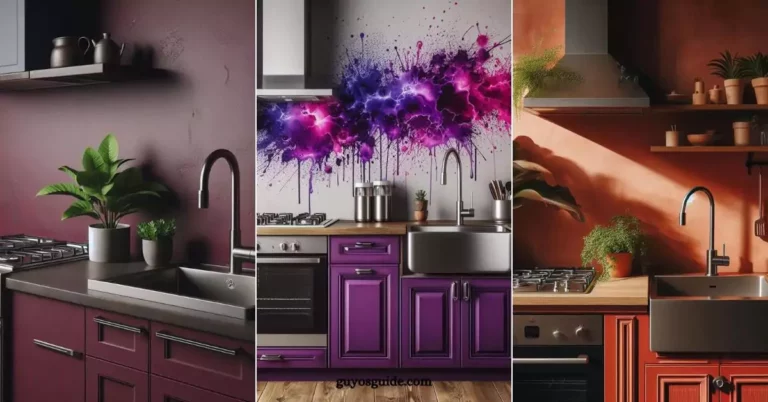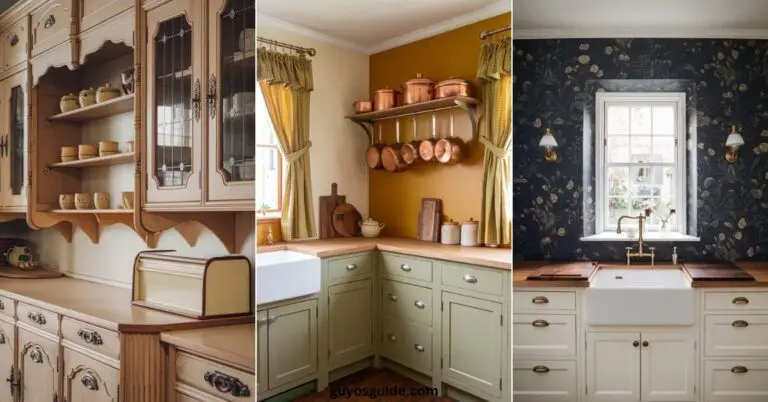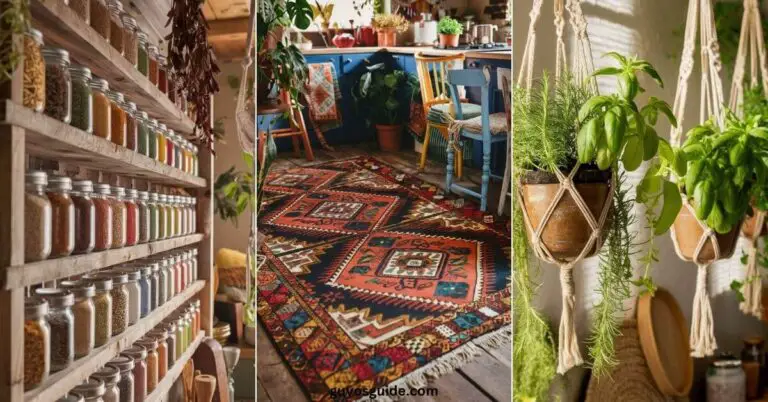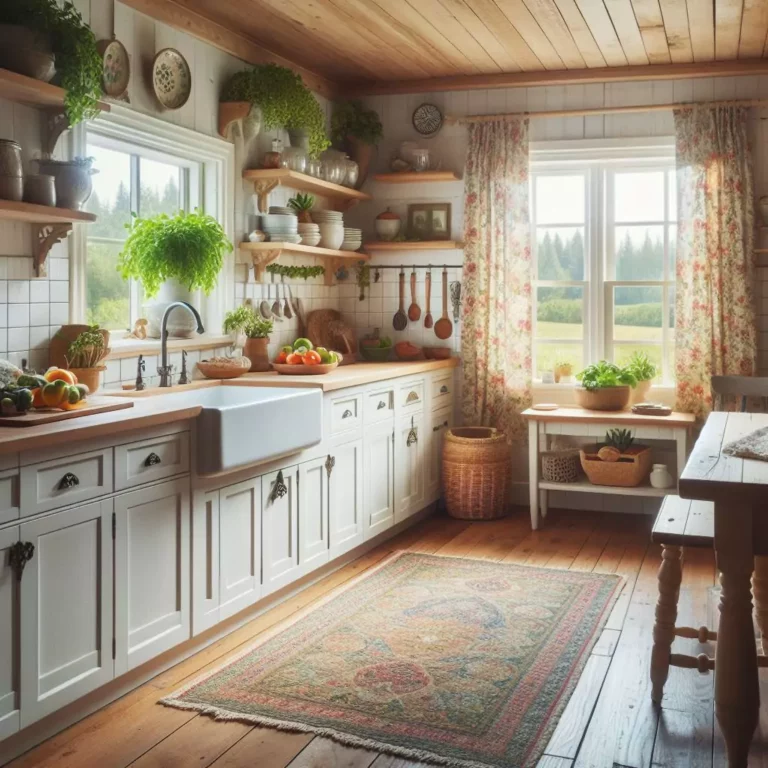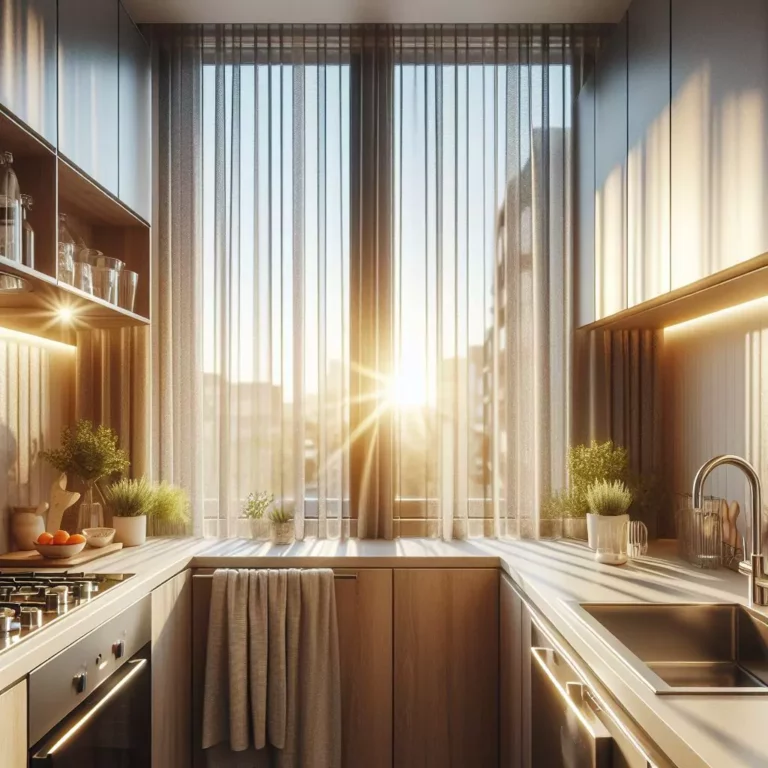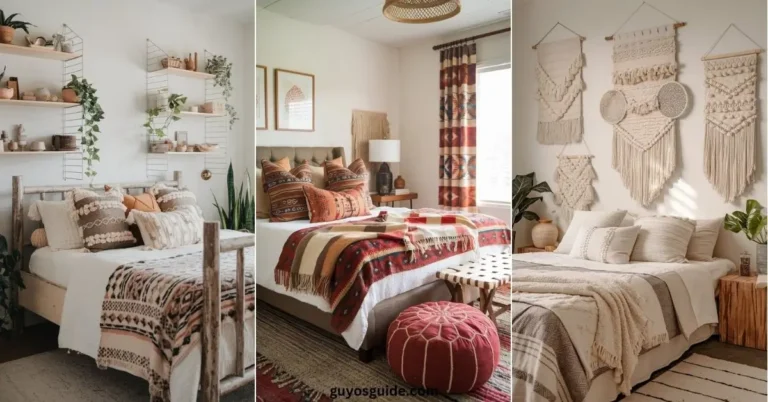25 Timeless Transitional Living Room Ideas for Any Style
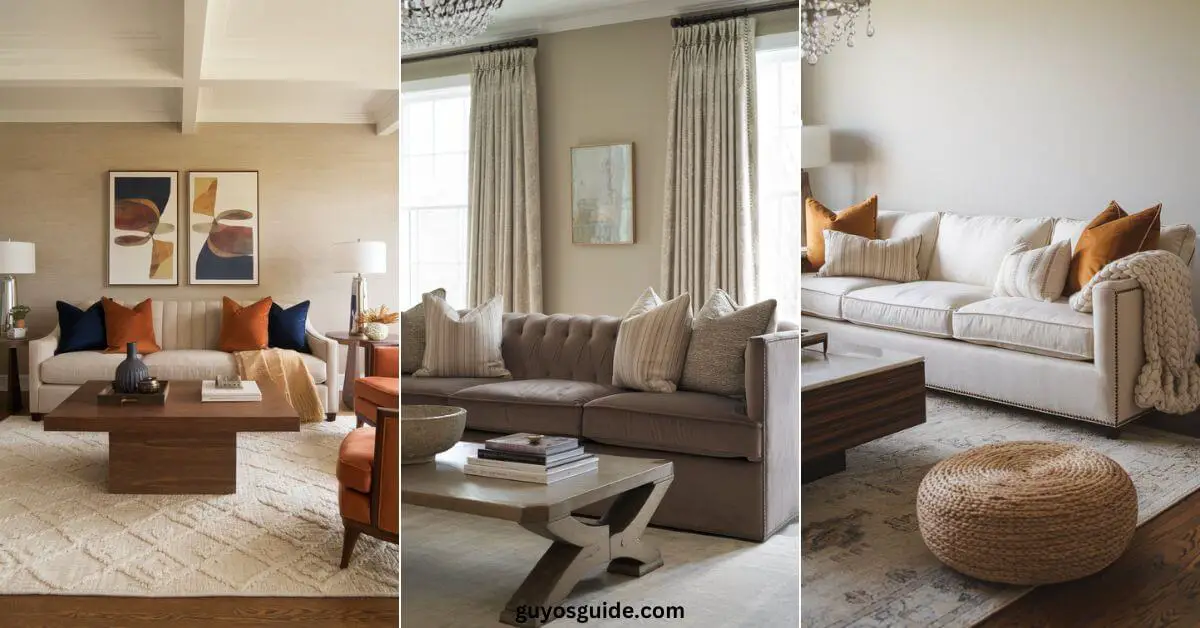
Some of the links in this post are affiliate links, meaning, at no additional cost to you, We will earn a commission if you click through and make a purchase.
Want to give your living room a fresh new look?
A transitional style is the perfect mix of classic and modern design.
In this article, we’ll share simple and stylish ideas to create a cozy and elegant space.
Ready to transform your living room?
Let’s get started!
1. Embrace a Neutral Foundation
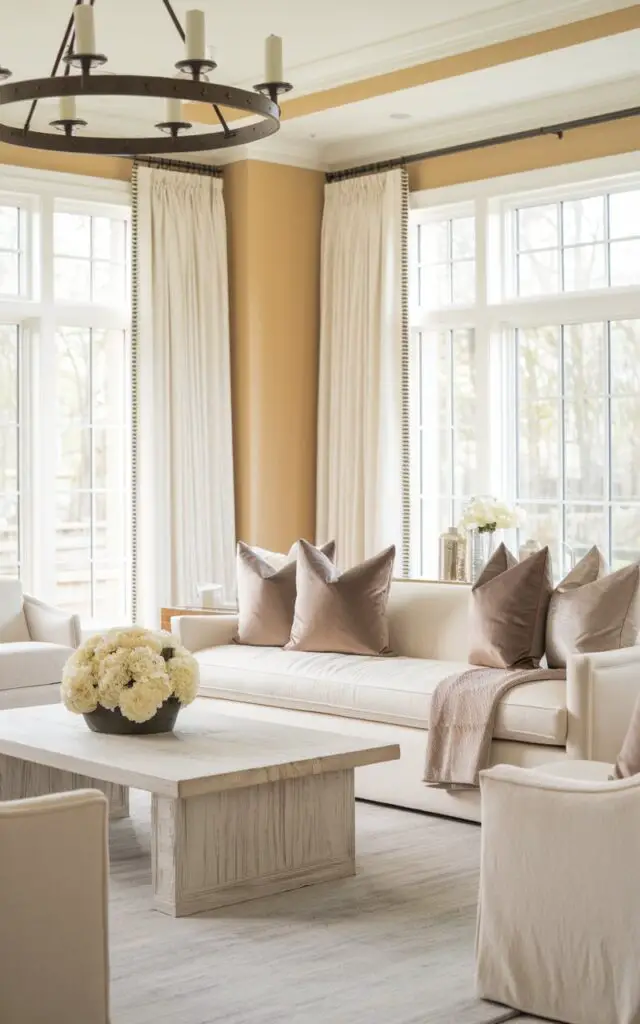
A transitional living room relies on a neutral color palette to create a timeless and adaptable space.
Shades of white, beige, and gray provide a calming backdrop that balances both modern and traditional elements.
These hues make it easy to layer textures, patterns, and accent colors without overwhelming the design.
Recommended Article: 23 Transitional Dining Room Ideas
2. Mix Classic and Contemporary Furniture
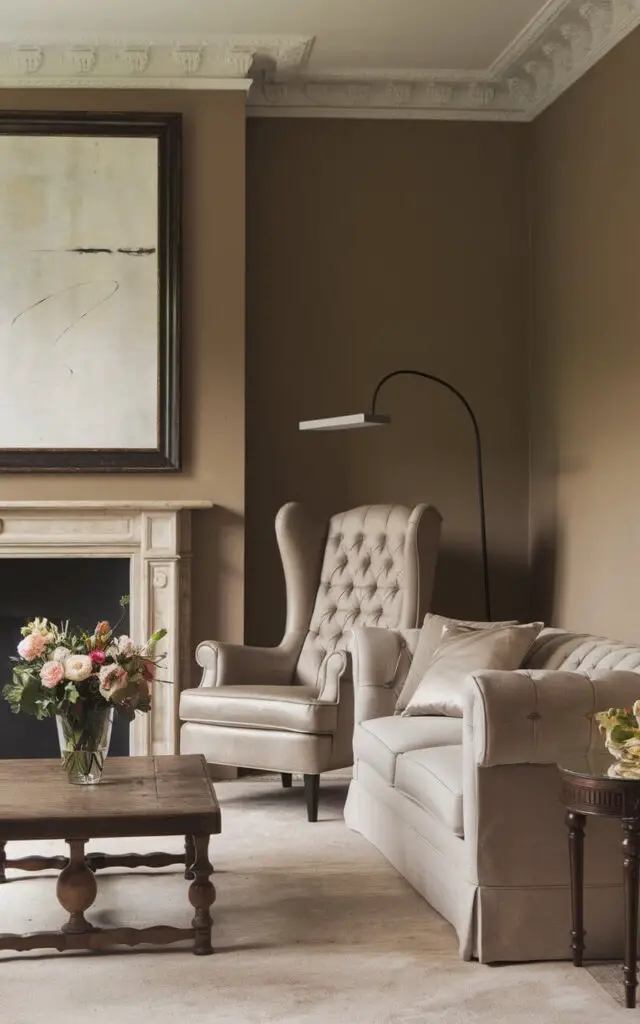
Blend modern and traditional furniture to achieve a seamless transitional look.
Pair a sleek sofa with a vintage wooden coffee table or place classic wingback chairs next to a minimalist side table.
The mix of old and new keeps the space visually dynamic while maintaining a refined and cohesive aesthetic.
You can find the best wingback chairs here on Amazon.
3. Opt for Layered Lighting
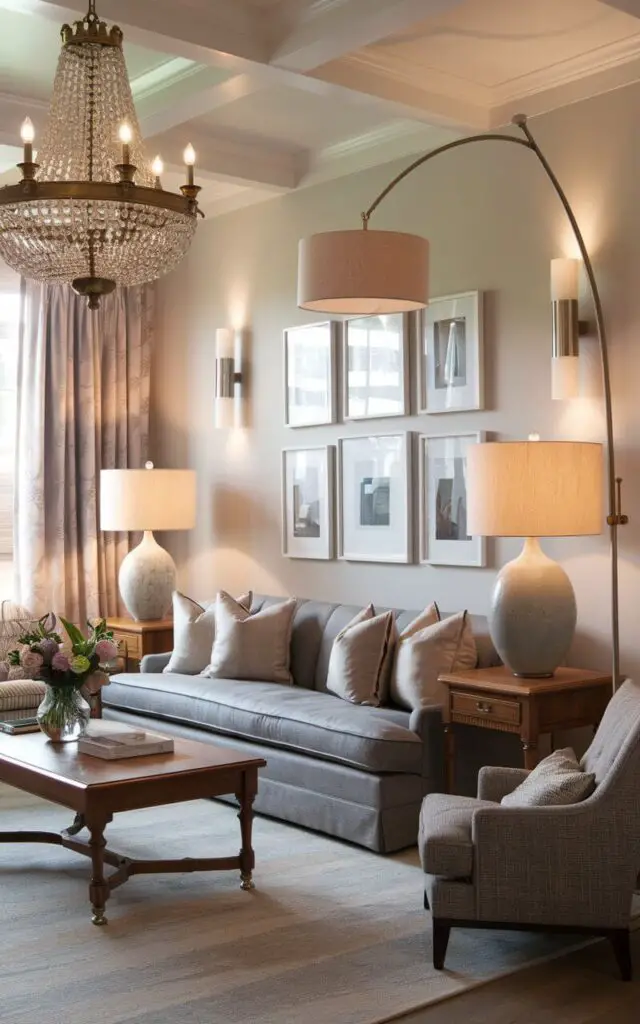
Lighting plays a crucial role in setting the mood.
Use a mix of chandeliers, table lamps, sconces, and floor lamps to create depth and warmth.
A traditional pendant light can add elegance, while modern sconces offer functionality, ensuring a well-lit and inviting atmosphere in the living room.
You can find the best traditional pendant light here on Amazon.
4. Choose Timeless Upholstery
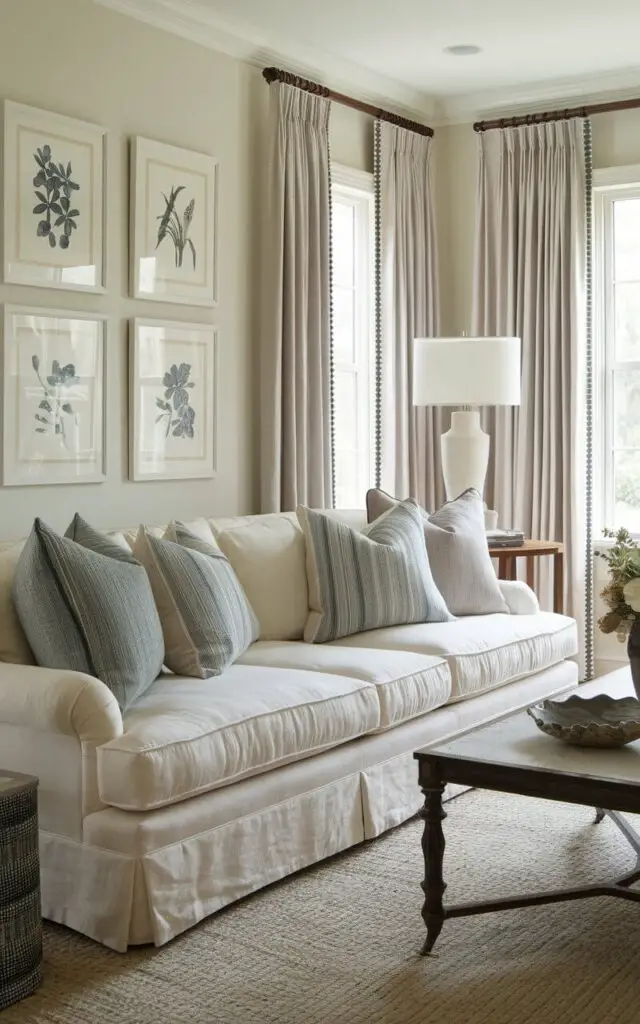
Furniture upholstery should balance comfort and sophistication.
Opt for neutral or muted tones in fabrics like linen, cotton, or velvet. These materials add texture without overwhelming the space.
Avoid overly bold patterns, and instead, focus on subtle details like tufting or piping for a refined yet inviting appearance.
5. Incorporate Architectural Details
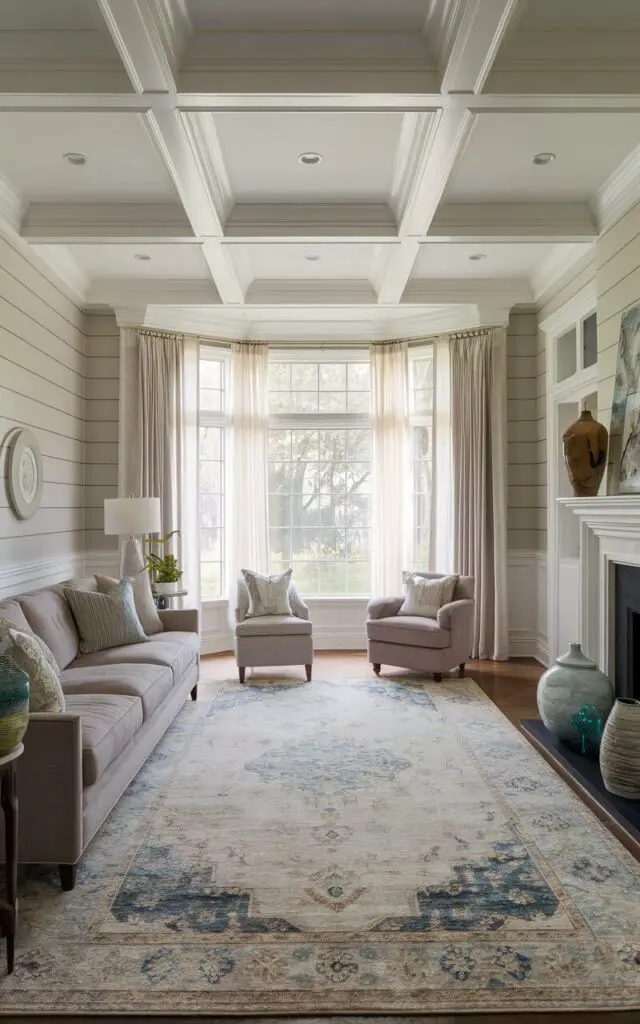
Enhance the room’s character with architectural elements like crown molding, wainscoting, or coffered ceilings.
These classic features add elegance and depth while blending effortlessly with contemporary furnishings.
If your home lacks these details, consider adding decorative paneling or trim to achieve a more polished, transitional look.
6. Blend Warm and Cool Tones
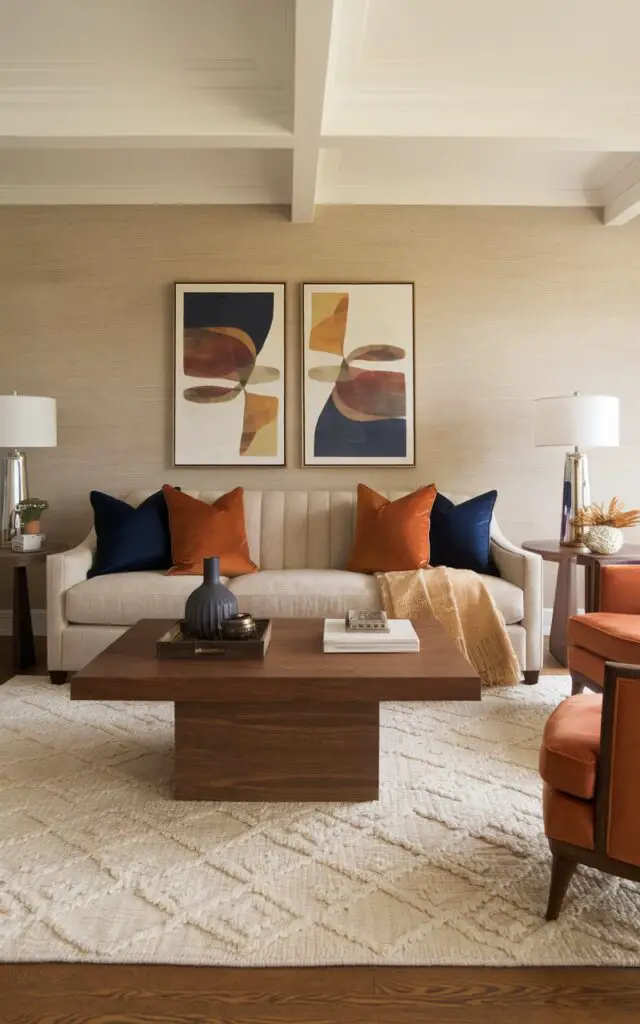
A transitional living room strikes a balance between warm and cool tones.
Pair warm wood accents with cool-toned walls or mix brass and silver finishes.
This contrast ensures the space feels well-rounded and dynamic while preventing it from skewing too traditional or too modern.
7. Keep Patterns Subtle and Sophisticated
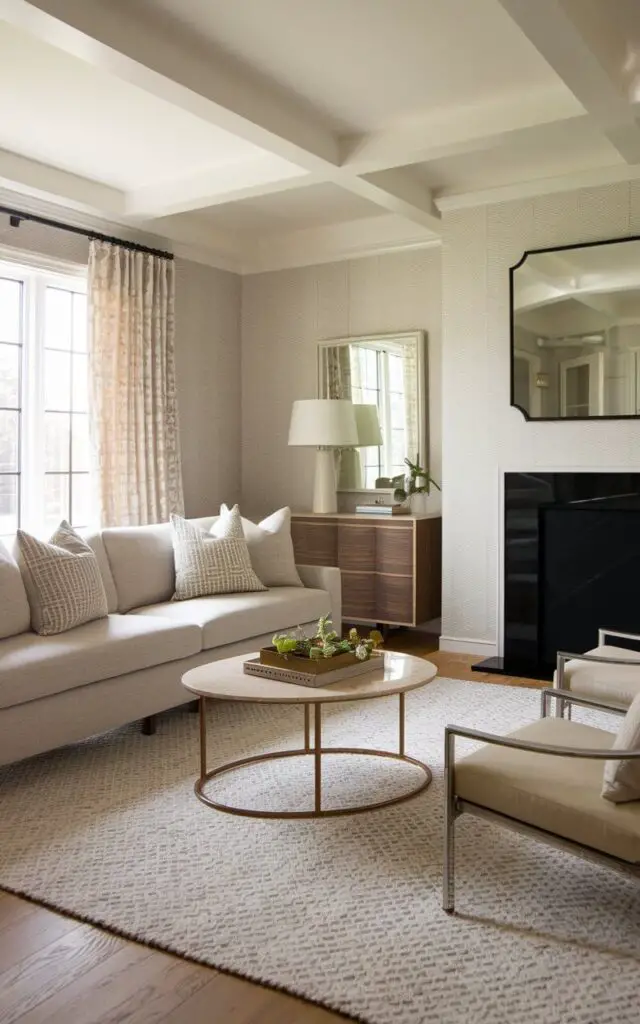
Patterns should be understated yet impactful.
Incorporate soft geometric designs, delicate florals, or classic herringbone patterns in rugs, pillows, or upholstery.
These subtle prints add visual interest while maintaining the room’s overall harmony, ensuring the design feels elegant rather than overwhelming.
8. Incorporate Statement Art Pieces
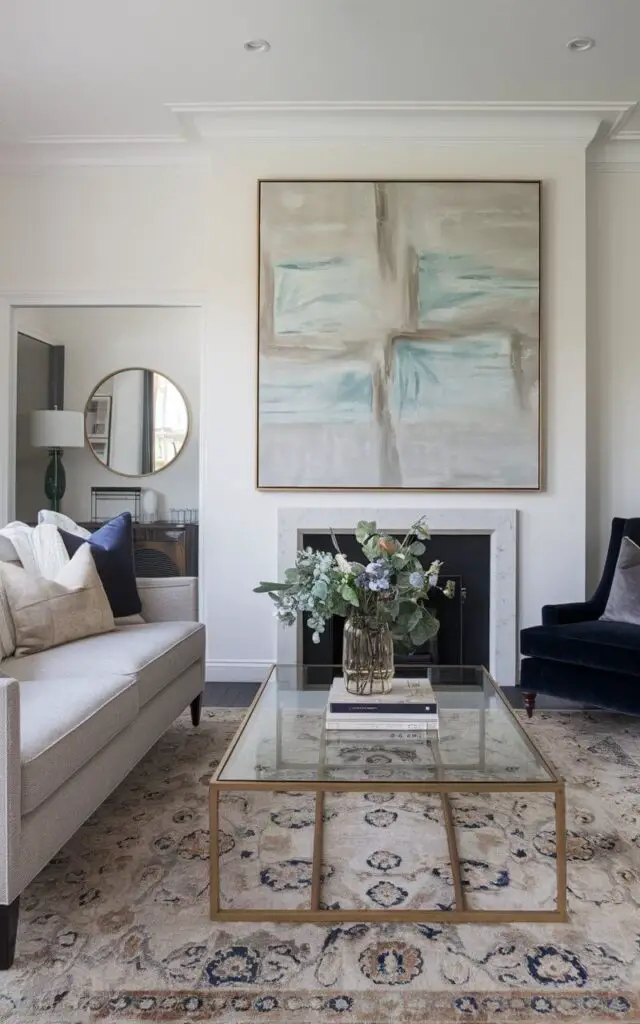
A well-chosen art piece can serve as the focal point of a transitional living room.
Whether it’s a bold abstract painting or a traditional landscape, artwork bridges the gap between old and new.
Keep the frame sleek and simple for a contemporary touch that blends effortlessly with classic elements.
9. Use Wood and Metal Accents
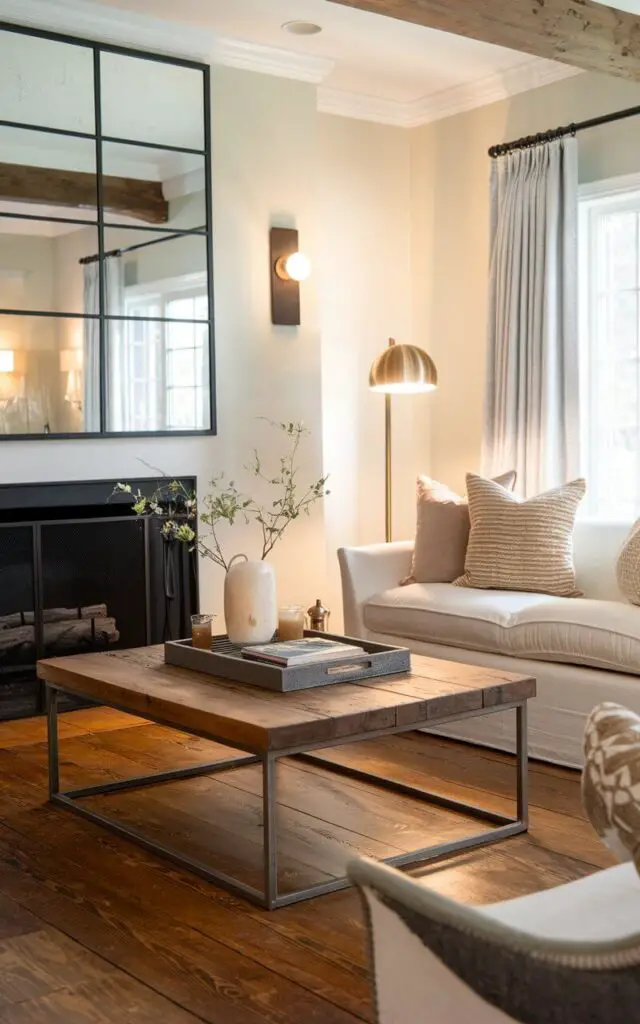
Mixing wood and metal accents adds a refined contrast to a transitional space.
A coffee table with a wooden top and metal legs, brass light fixtures, or iron-framed mirrors introduce depth while maintaining a sophisticated balance between rustic and modern influences.
You can find the brass light fixtures here on Amazon.
10. Keep Window Treatments Simple and Elegant
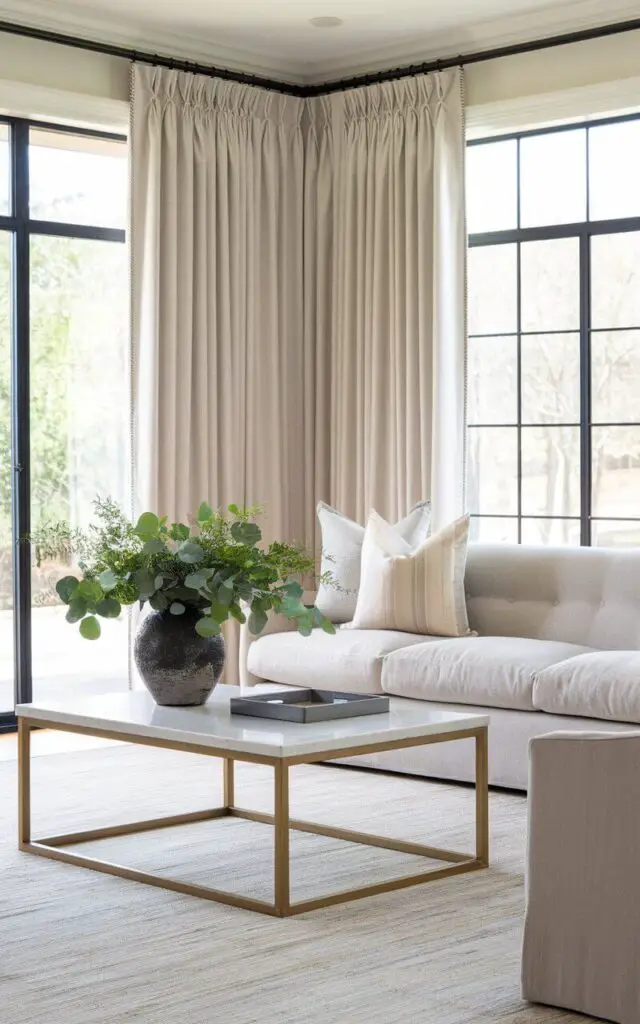
Drapery should enhance the room without overpowering it.
Opt for neutral-colored curtains in soft fabrics like linen or cotton.
Floor-to-ceiling panels create an elegant look, while Roman shades provide a tailored, streamlined option.
Avoid heavy patterns or elaborate designs to keep the space feeling light and airy.
11. Add a Cozy Yet Modern Fireplace
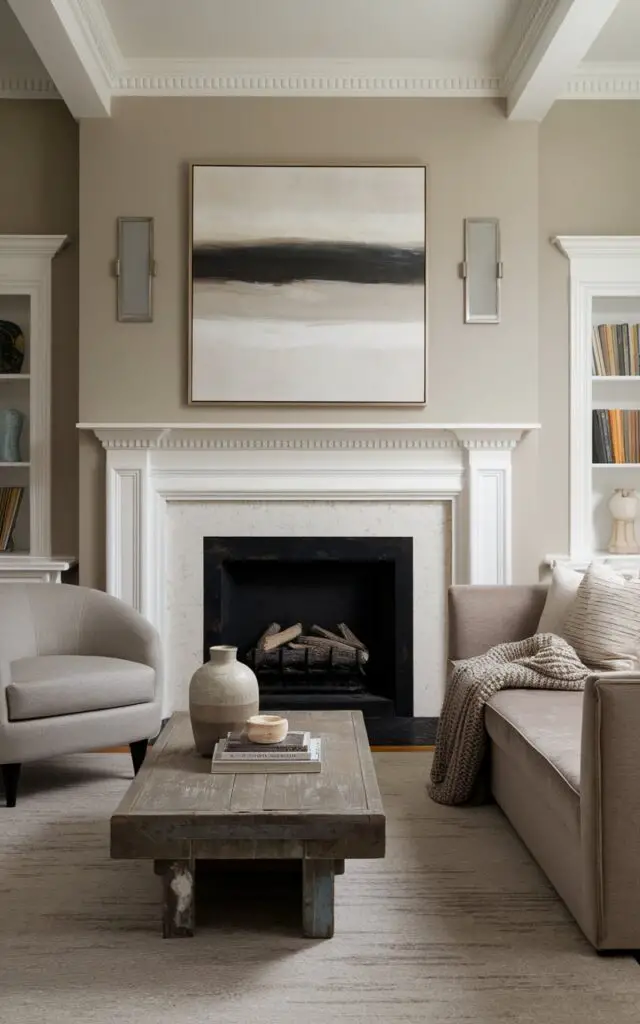
A fireplace is a natural focal point in a transitional living room.
A sleek fireplace pairs well with a classic mantel, while a stone or brick surround keeps the look warm and inviting.
Layering decor like candles, framed art, or vases enhances the mantel’s visual appeal.
12. Focus on a Symmetrical Layout
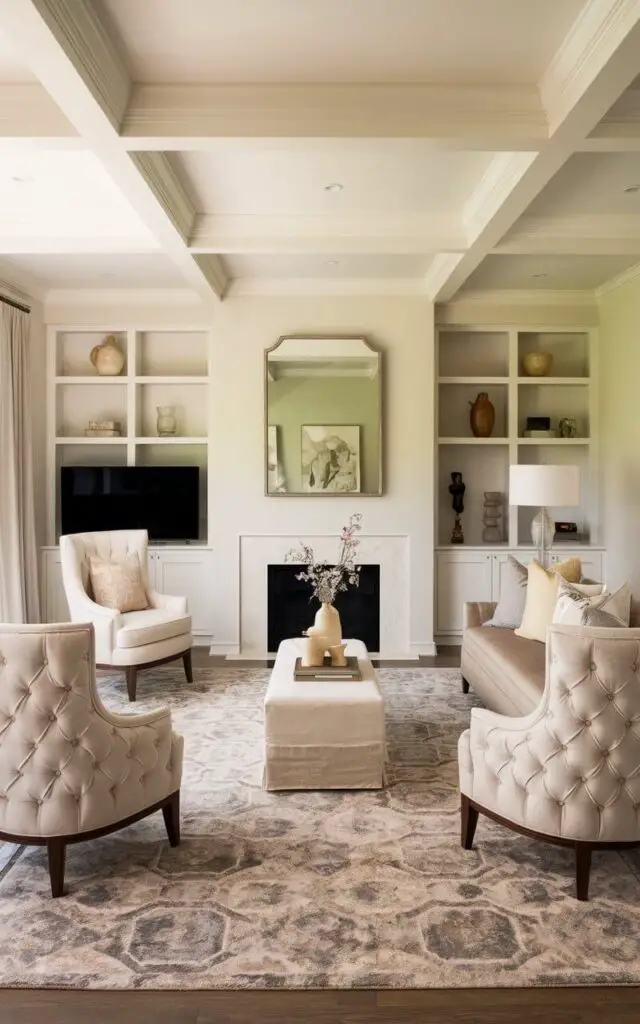
Symmetry creates a sense of balance and harmony.
Arrange furniture in pairs, such as matching armchairs flanking a fireplace or identical lamps on either side of a sofa.
A structured layout ensures the space feels cohesive, making it inviting without appearing overly rigid.
13. Experiment With Mixed Textures
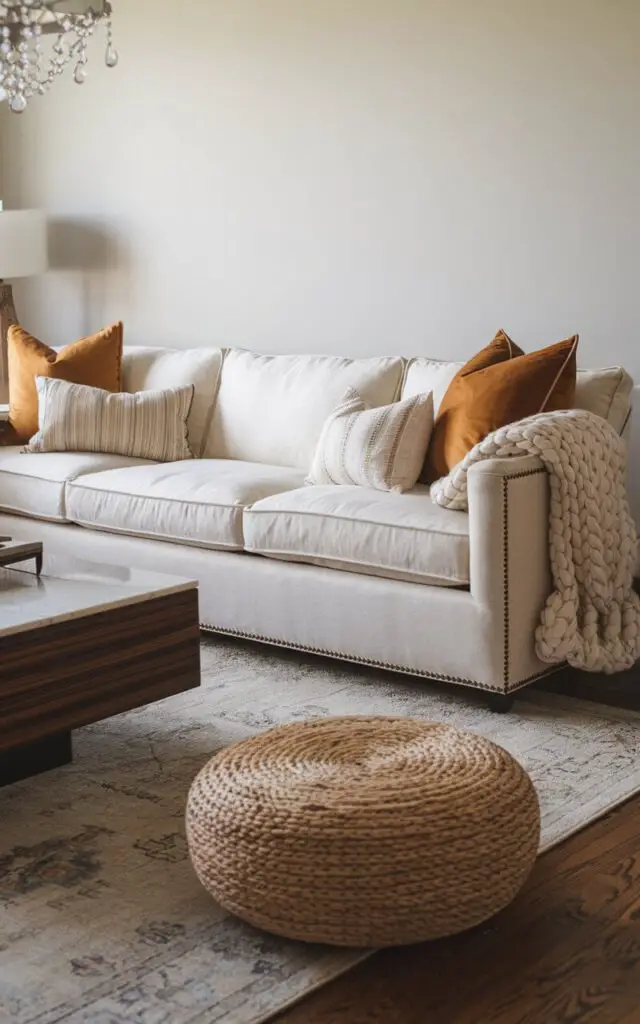
Texture plays a key role in transitional design.
Layering elements like a plush area rug, woven baskets, smooth glass surfaces, and soft upholstery create depth and warmth.
The mix of materials ensures the room feels inviting while maintaining a polished and thoughtfully curated aesthetic.
14. Use Built-in Storage for a Seamless Look

Built-in shelving or cabinetry provides storage without disrupting the design flow.
White built-ins blend seamlessly into a neutral wall, while a dark wood finish adds a touch of contrast.
Use a mix of decorative objects, books, and baskets to keep the shelves looking stylish yet functional.
15. Choose Transitional-Inspired Rugs
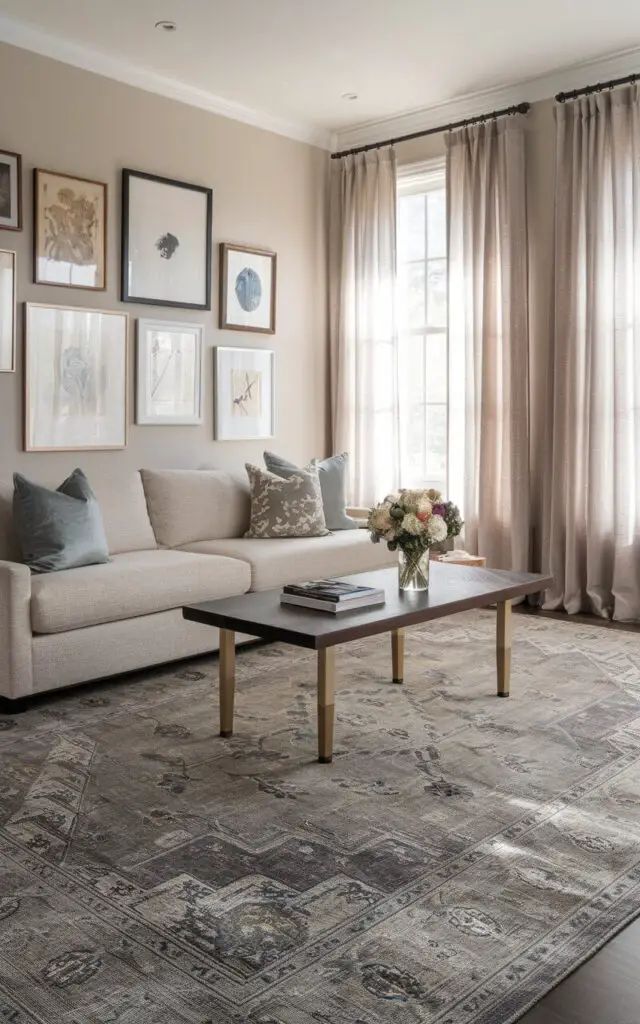
A transitional rug should anchor the space without dominating it.
Opt for muted Persian rugs, soft geometric patterns, or solid textures that complement the room’s color scheme.
The right rug provides warmth underfoot while subtly connecting traditional and modern design elements.
16. Incorporate Glass Elements
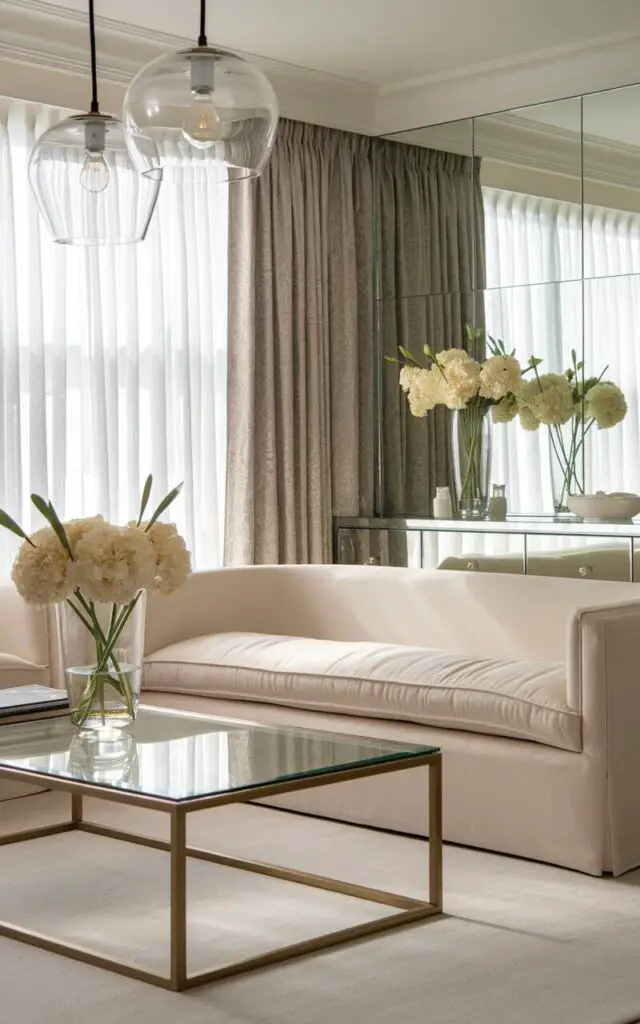
Glass adds an airy, sophisticated touch to a transitional living room.
A glass coffee table, mirrored side tables, or decorative glass objects enhance the space’s openness while reflecting light.
These elements prevent the design from feeling too heavy or overly traditional.
You can find the best glass coffee table on Amazon.
17. Highlight a Statement Ceiling
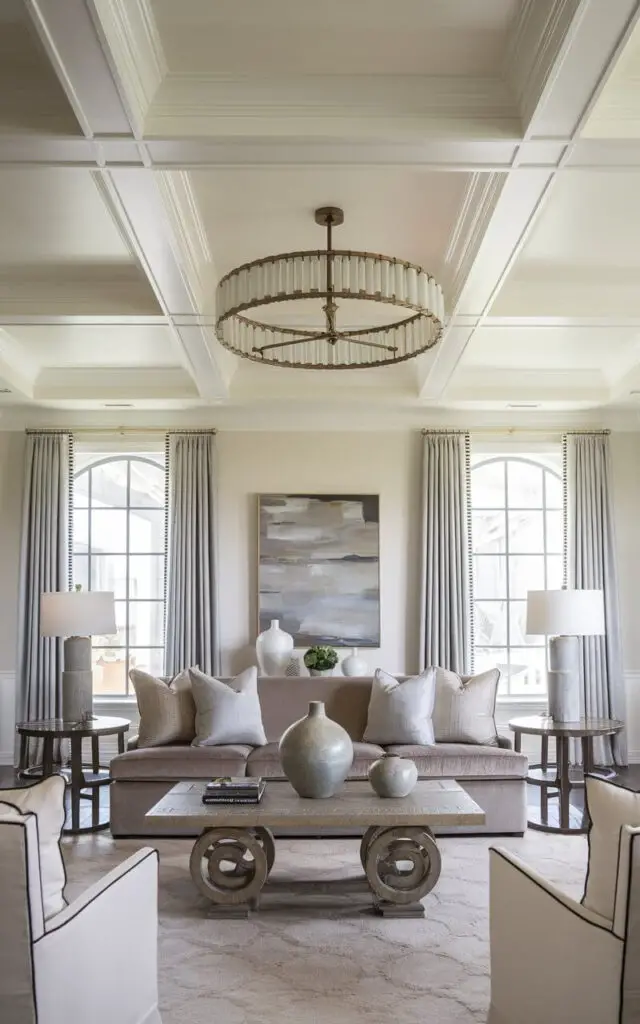
Ceiling details elevate a room’s design.
Coffered ceilings, wood beams, or a soft-toned paint color draw the eye upward, adding architectural interest.
If you prefer a subtle approach, consider a statement light fixture that highlights the ceiling without overwhelming the space.
Find the best chandelier for your transitional living room here on Amazon.
18. Introduce Organic Elements

Natural materials like wood, rattan, marble, or linen create a sense of warmth.
Incorporate wooden side tables, stone accessories, or woven baskets to bring texture and a touch of nature into the space.
These elements soften modern lines and enhance the room’s welcoming feel.
You can buy a fiddle leaf on Amazon here.
19. Create Depth With Layered Decor
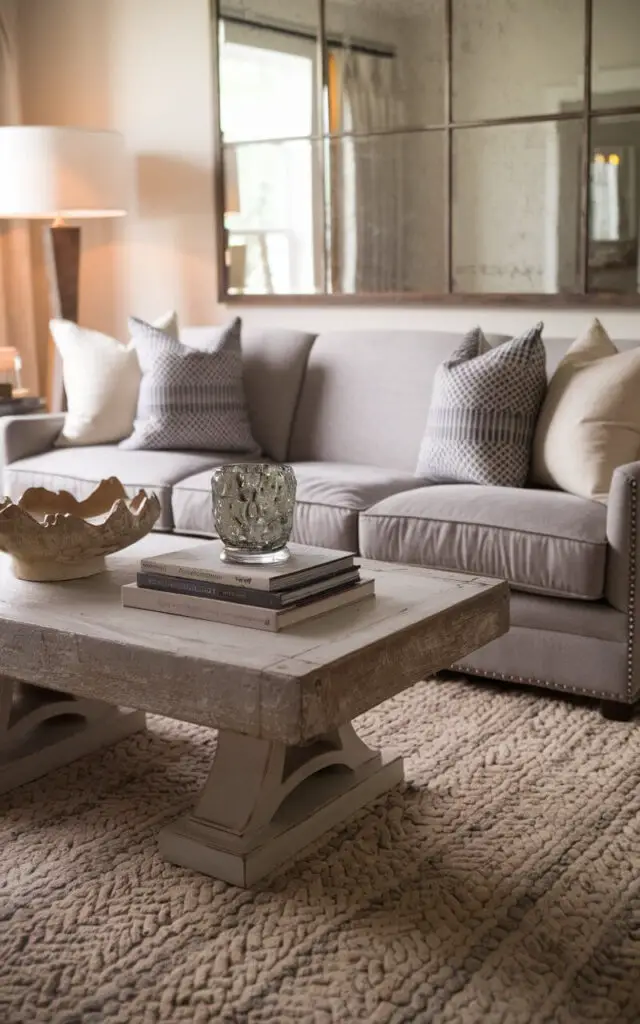
Instead of a minimalist approach, embrace intentional layering.
Stacking books on coffee tables, grouping decorative objects on shelves, and layering pillows in various textures add richness without cluttering the space.
This technique ensures the room feels inviting and lived-in.
20. Opt for a Classic Yet Modern Sofa
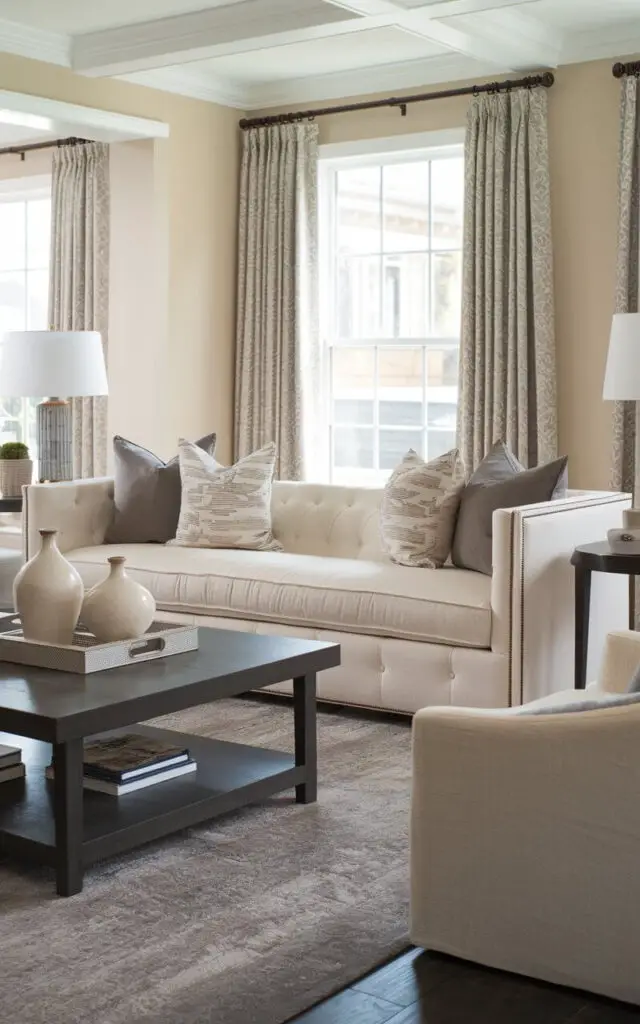
A transitional living room requires a versatile sofa.
A Chesterfield with modern legs or a clean-lined sectional with plush fabric blends traditional and contemporary styles.
Choose neutral tones like taupe, gray, or ivory for timeless appeal, then accessorize with textured throw pillows.
21. Bring in an Unexpected Pop of Color
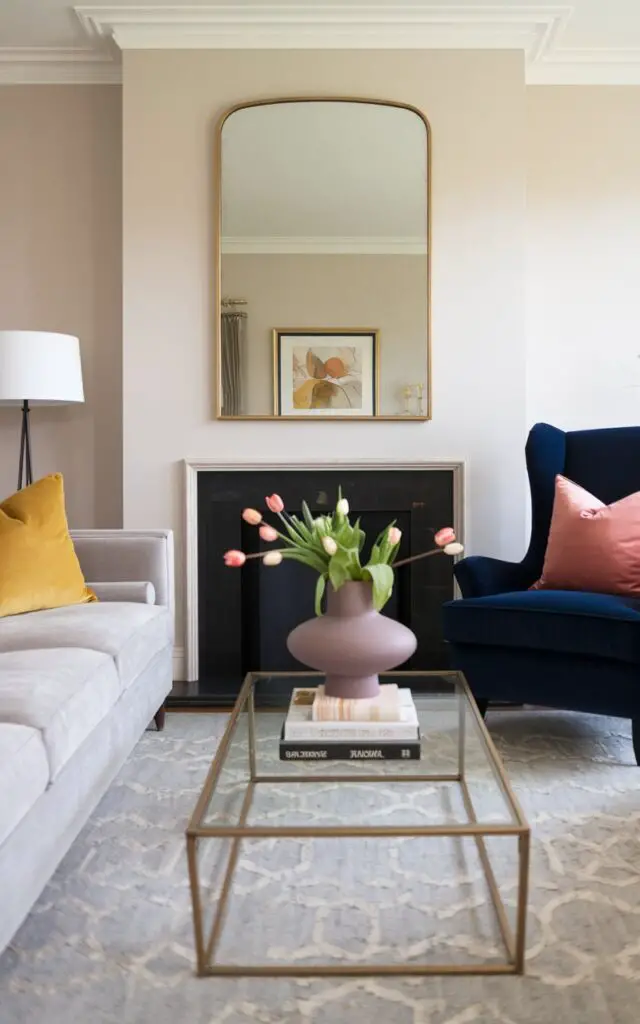
While neutrals dominate transitional spaces, an accent color adds personality.
A navy blue armchair, an emerald green ottoman, or mustard yellow throw pillows introduce contrast while maintaining the room’s refined aesthetic.
Keep bold colors limited to accessories for easy updates over time.
22. Frame the Room With Elegant Trim Work
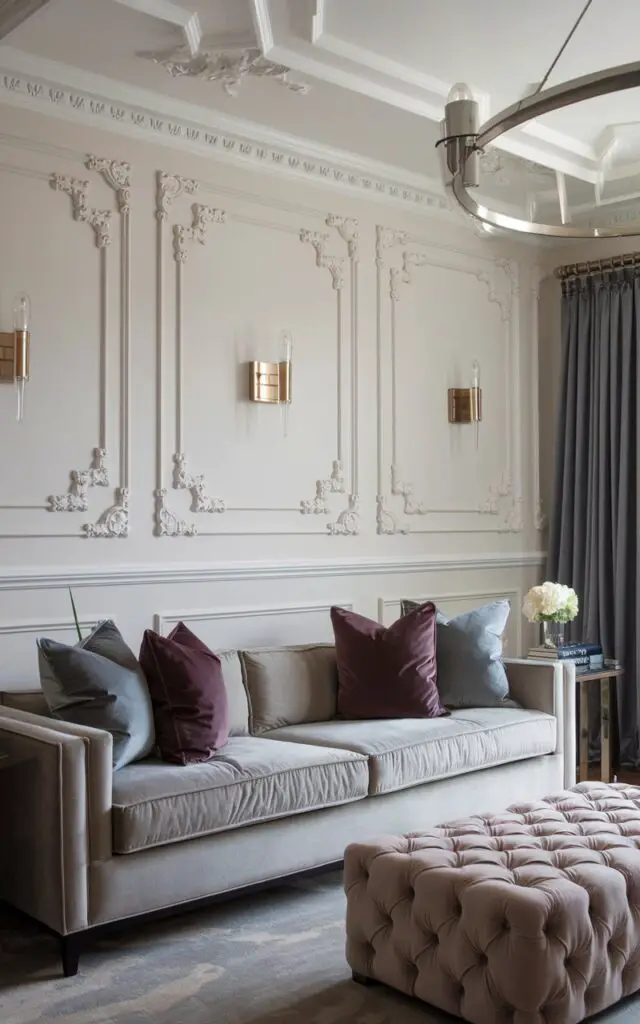
Wall trim and molding add a sophisticated touch to transitional living rooms.
Picture frame molding, shiplap, or wainscoting introduces texture and depth.
Keeping the trim color consistent with the walls ensures a seamless, polished look that enhances the space without overwhelming it.
23. Choose Furniture With Subtle Curves
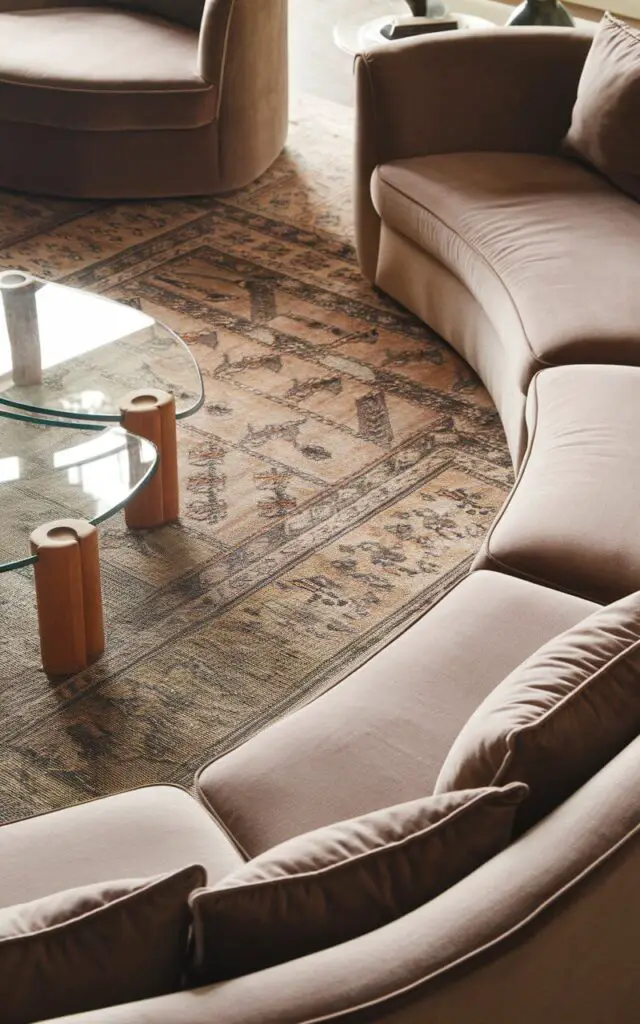
Transitional spaces benefit from a mix of straight and curved lines.
A rounded armchair, an arched mirror, or a curved-back sofa softens angular pieces, creating a sense of movement.
This balance prevents the room from feeling too structured or rigid.
You can find the best curved sofa on Amazon here.
24. Incorporate a Touch of Black for Contrast
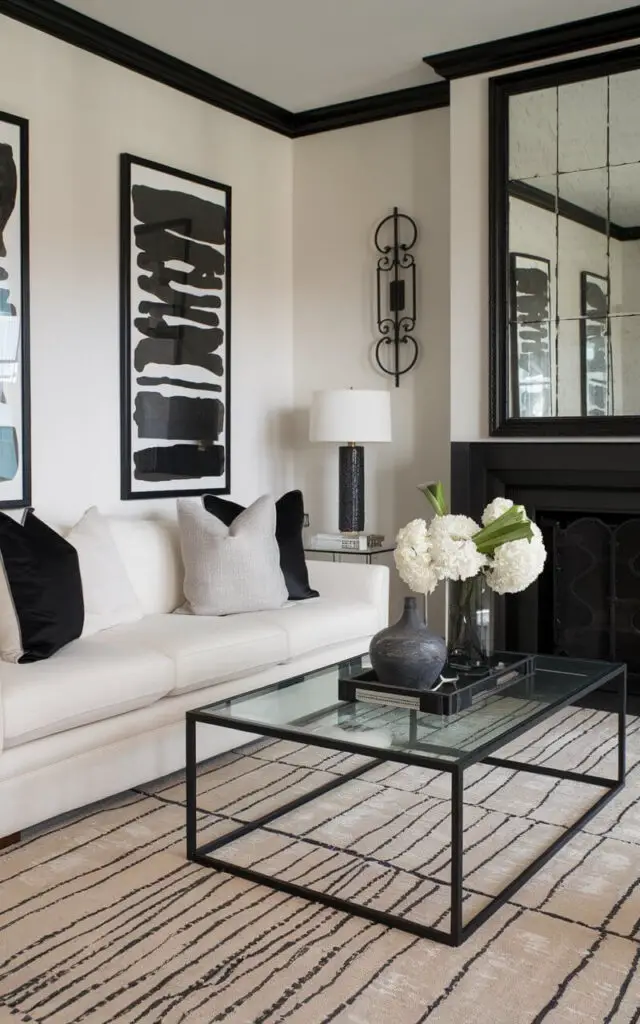
A few black accents ground the space and add sophistication.
Consider black-framed art, a matte black coffee table, or iron light fixtures to create contrast.
These elements prevent the room from feeling too light or washed out while maintaining a refined, modern edge.
25. Keep It Timeless and Adaptable
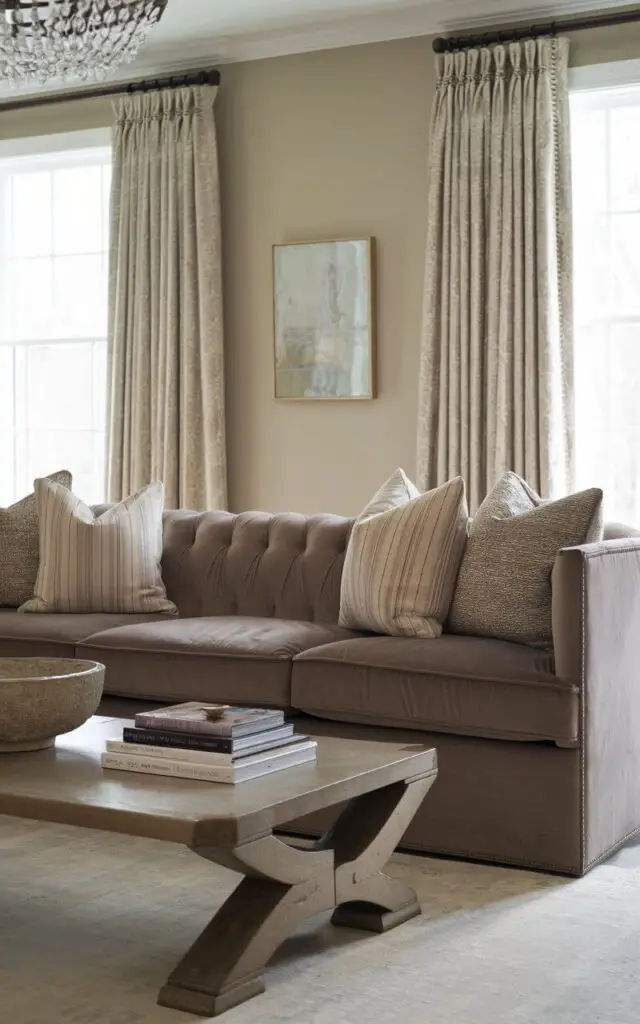
Transitional design thrives on longevity.
Stick to high-quality furniture and classic designs that can evolve with your style.
Swap out accessories seasonally, but keep foundational pieces neutral and well-crafted.
This ensures your living room remains stylish, functional, and effortlessly sophisticated for years to come.
Wrap Up
A transitional living room blends classic and modern styles for a warm, stylish space.
With the right balance of colors, textures, and furniture, you can create a cozy yet elegant feel.
Try these ideas to refresh your home and make it truly inviting.
Enjoy designing your perfect space!
